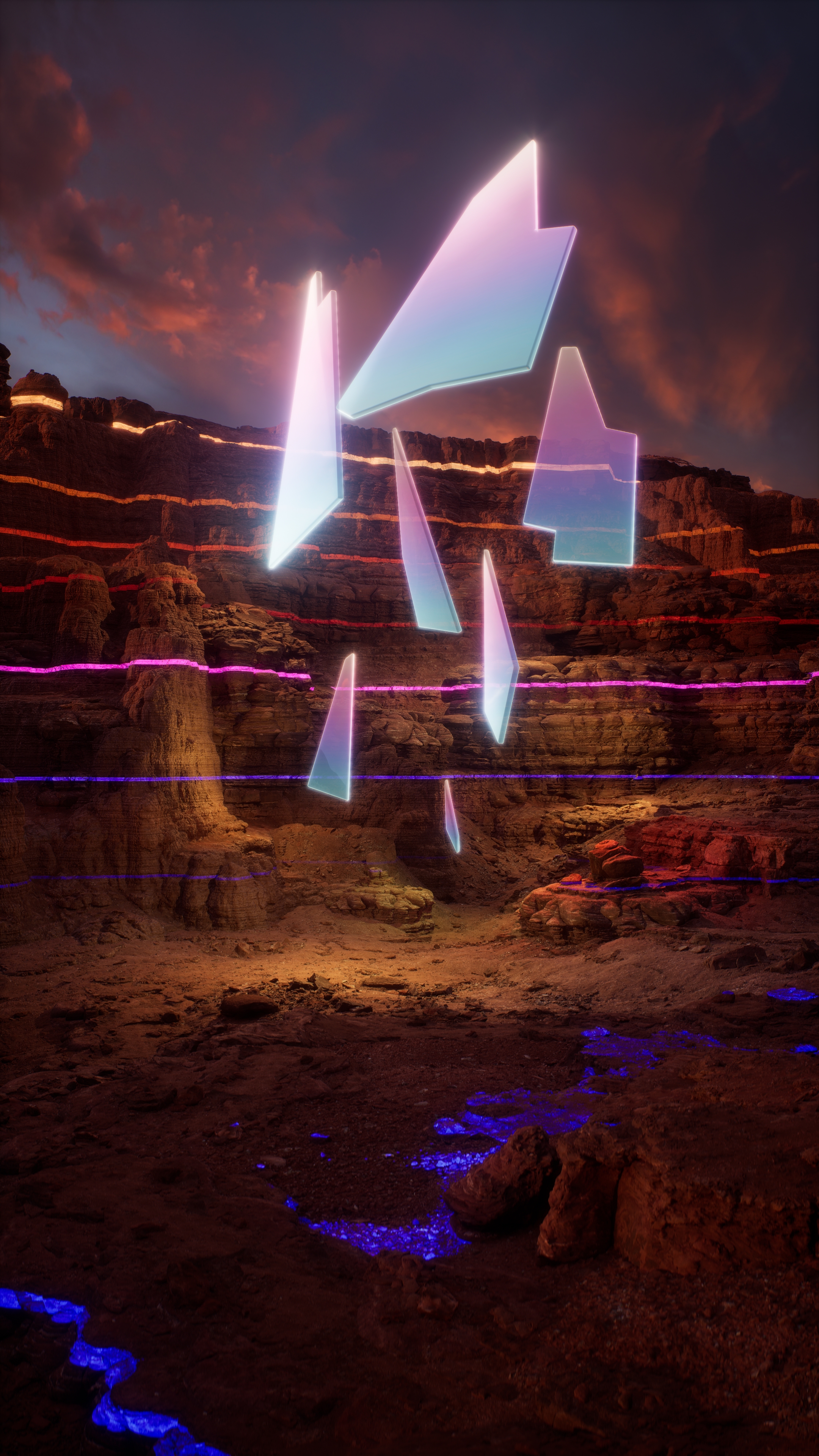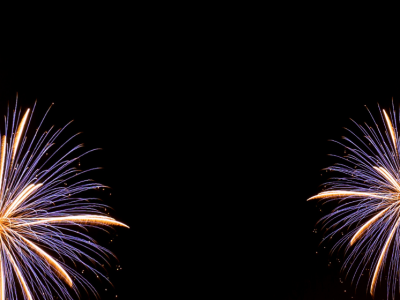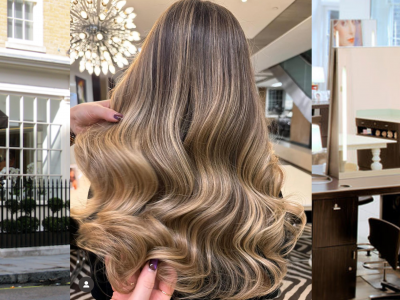What was your abiding memory of London 2012?
It was one of the most emotional projects for our entire team. It felt like we were a vital part of connecting all nations in a moment of global celebration and togetherness. It was a powerful feeling and one that we got to experience again with all the clips from the opening and closing ceremonies having resurfaced for the tenth anniversary of the games this summer. It's an incredible feeling to see our work still standing the test of time.
What was the most surprising reaction you had to the Mobility Pavillion in Dubai?
The reaction from local Emiratis was a lovely surprise in that they were really moved by the content, which showed how far the UAE has come. From initial explorers of the region to all the way up to an imagined 2070 where we envisioned a future of living in harmony with advanced technology and nature. We were very proud to hear that the exhibition that was only intended to last 6 months, was selected to be reopened as a permanent museum. An excellent example of how such profound narratives can be timeless.
Having worked on Valley of Wonder, what do you see as the next stage in evolution for theme parks?
Take Disney as an example; its strategy is to get the most out of nostalgic and emotionally resonant IPs that are all connected under one highly curated experience that brings back audiences again and again. If you remove the nostalgic IP from the equation, the only other element that can ensure the success of this strategy is experience design. Immersive theatre that is driven by the latest innovations in experiential design and storytelling, can create new moments of wonder for all ages. To get to the next level theme parks need to create environments people can explore while engaging with performers in multi-layered narratives. Each time you enter the experience, your journey through it is totally different, unique, which means people will come back again and again.
What is the strangest request or commission you have received from a client?
Being asked to create the show experience on land and in outer space for Lady Gaga’s performance from the Virgin Galactic spaceship.
Which musical performer or DJ do you predict is going to have the most spectacular show of 2023?
Luo Tianyi, the virtual idol will no doubt have one of the most spectacular shows in 2023. As she’s entirely virtual, the show experience has to be on a whole new level to support her.
What do people get wrong about NFTs?
It's not just about betting on buying an image from a variation of 10,000 images of cartoon faces. It's actually finally a way for digital screen based art to move into Christies and other large auction houses where screens are no longer a barrier to collecting art. You don't need a projector and a huge gallery wall to sell moving image work. I recently created 50/50 with sound artist Giovanni Agusta. As it's a digital art piece, I can use virtual cameras within the landscapes to show multiple different scenes creating hours of content, with atmospheric conditions, time of day, weather, and even seasons changing. This means we have the ability to create thousands of totally unique and distinctive digital artworks from the same original piece. With art patron Jonathan Lett, who has funded the project, we will create and auction multiple digital versions of this work as ‘spatial NFTs’ - which contain a blueprint for recreating the work in physical spaces- the proceeds of this auction will go to the United Nations Environment Programme and their nominated charities. This would not have been possible before the world accepted NFT’s as a valid way to prove ownership of digital art, but it also gives buyers and collectors so much more value than simply buying one of thousands of identical iterations of the same artwork.
What was the hardest thing to get right about a ‘Spatial NFT’?
Spatial NFTs are virtual blueprints for digital artwork and experiential design that include instructions for how to recreate that design in a physical space. We mostly create bespoke Spatial NFTs, a lot of the time for private collectors to own the display,curation or immersive environment in which the original work came to life. However sometimes we don't know the final venue it will end up in, and we really want to personalise the forms of the digital canvases for the collector’s home. Another challenge is sustainability. Our design process has best practice for sustainability and the future of our planet firmly embedded, so we are looking forward to the ETH Merge that is expected to make NFTs more sustainable.
Do you think the Abba Voyage experience is going to be replicated by other artists and who would you like to see use it?
It’s been a long time coming. Our first hologram show went on tour with Eric Prydz in 2011 worldwide. Our first hologram performance with a hologram avatar singer was with Studio Killers in 2014 and the emotional resonance of the audience to their digital idol was an amazing thing to witness first hand. Although holograms have been with us for years, the current generation will embrace this in a huge way as they are identified more with the cross cultural manifestation of digital performers. It's finally lifting off and we are already working on a large project that will greatly expand the boundaries of how virtual performers can interact with physical environments.
What’s your own favourite piece of technology and why?
It’s got to be my Leica M10 rangefinder camera. It makes you stop and pause and become hyper aware of the moment due to the way the camera operates. It’s nice to take those moments in the day. In terms of technology Immersive has made, it would be the AI Media server that we created (and then sold on, but still support) to run incredible events and permanent installations.
How can AI help creatives achieve more?
Currently, we are seeing it speed up the art direction process due to the fact you can create reference and mood images incredibly fast. Soon it will be possible to get 3D models from text based suggestions. The next step will be refining the models and texturing. From there we will see an incredible race towards sequential content where you can enter in an entire book, music album, suggest your favourite director, your favourite Director of Photography, your favourite stylist, and your favourite editor. The outcome could be a stylised film that could be viewed in 360 degree virtual reality experience. At this point, specialist creatives will be those who have a huge awareness of culture references who can then use these to refine and define the AI’s output through an iterative process, creating a whole new process for content creation. Immersive stays one step ahead of this incredible new change in the content industry as we work in the physical space with our digital content experientially and spatially so we are safe for the next while thankfully…
Which theatre show do you believe is really pushing the limits of effects right now?
There’s some amazing immersive theatre experiences and companies out there now. The pioneers of this - Punchdrunk - continue to delight and amaze with Sleep No More and their new show The Burnt City as well as companies like Third Rail Project, who created The She Fell in NYC. The interesting thing about these companies is that they are all relatively low-tech immersive experiences, relying on detailed physical production design and non-linear narrative paths to immerse audiences. It’s exciting to see smaller companies experiment with XR technologies and to push boundaries between mediums - Stalker in Australia has been combining physical theatre, dance and immersive & interactive technologies with some very moving narrative experiences. At the same time, we are seeing many mainstream commercial shows adopting projection design as standard within their set design - think of Life of Pi and La Belle Sauvage in London recently, or almost any of Ivo Van Hove’s works. This will only continue and we are sure we’ll see the development of even more cutting-edge immersive technologies and techniques on the West End soon…
What do people get wrong about your work?
Often people don’t fully understand that the work we create is timeless and futureproof. That is until about 10-15 years later, and then they are pleasantly surprised that the content, visuals and experience still look and feel as compelling as they did when we first installed them. One of our first museum installations back in 2006 was at the Ulster Museum, and the 360 degree projection mapped installation still stands the test of time today.
What is your next big project for 2023?
I'm currently working on a new gallery show with Giovanni Agusta that will open in Shanghai this December. We are also involved in multiple projects with major environmental organisations to use our powers of immersive storytelling and creative innovation to help bring the scale of the climate crisis to life, and to inspire people into climate action. It’s a huge challenge but one we are passionate about and to which our work is perfectly suited. Immersive is working on a huge master planning project that will combine multiple entertainment and experience spaces such as Immersive theatre and experience museums. Exciting times!






